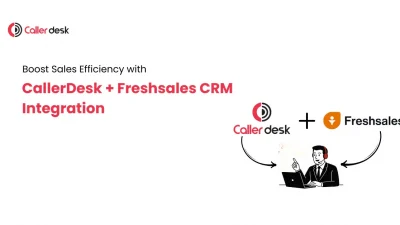Every business wants to grow and make more sales. But just working hard is not enough-you need a clear target.
That’s why setting sales goals is so important.
Sales goals help you decide what you want to achieve and how you’ll get there.
They show your team what to focus on, how much to sell, and how to track progress.
Without proper goals, your sales team may be busy all day but still miss the results.
With the right goals, even a small team can perform like a big one.
Many businesses don’t grow-not because they lack good products-but because they don’t set clear goals.
A simple sales goal can change the way your team works and improve your results every month.
In this blog, we’ll help you understand sales goals in the easiest way possible-so you can use them to grow faster and smarter.
What Are Sales Goals?
Sales goals are clear targets that tell your team what they need to achieve in a given time.
They help you measure progress, stay focused, and grow your business faster.
Think of it like this 👇
If you’re playing cricket, you can’t win unless you know how many runs to score.
Just hitting the ball without a target won’t help you win the match.
Business is the same.
If your sales team doesn’t know what their target is-like how many customers to add or how much revenue to earn-they’ll keep working without knowing if they’re moving in the right direction.
How to Set SMART Sales Goals
If you want your sales team to grow your business, they need clear goals. Not just any goals-SMART goals.
Now you might be thinking… what does SMART mean?
It’s not about being clever.
It’s a simple formula that helps you set goals that actually work.
Let’s break it down:
1. S for Specific
Your goal should be clear and focused.
Don’t say, “We want to sell more.”
Say, “We want to sell 500 mobile phones.”
This way, your team knows exactly what they have to do.
2. M for Measurable
If you can’t track it, you can’t improve it.
Make sure your goal includes numbers.
For example, “We want to sell 500 phones in 30 days.”
You can count how many are sold each day and see how close you are.
3. A for Achievable
The goal should be realistic-not impossible.
If your team usually sells 300 phones a month, a goal of 500 is challenging but possible.
But a target of 5,000? That’s just demotivating.
Always aim high-but within reach.
4. R for Relevant
The goal must help your business grow.
If your focus is increasing revenue, then setting a goal to “get 1,000 likes on Instagram” may not help much.
But setting a goal to “get 200 new paying customers” is directly useful.
5. T for Time-Bound
Every goal needs a deadline.
Without a timeline, people delay.
Say, “We want to complete this by 30th June,” not “someday.”
A clear timeline keeps everyone accountable.
Example of a SMART Goal (That Actually Works)
Let’s say you run a small shop selling school bags.
A SMART goal would be:
👉 “We will sell 500 school bags between 1st and 30th June by running a back-to-school discount campaign.”
Why is this SMART?
- It’s specific (500 school bags)
- It’s measurable (you can track daily sales)
- It’s achievable (based on past sales)
- It’s relevant (bags are your product)
- It’s time-bound (30 days)
3 Easy Steps to Set Sales Goals That Actually Work
Setting sales goals is not just about writing big numbers on a whiteboard.
It’s about knowing where you’re going, how to reach there, and how to stay on track.
Let’s break it down into 3 super easy steps:
Step 1: Set the Right Goals (Don’t Just Guess)
Imagine you’re aiming at a target in a game.
You need to know where the target is before you throw.
Same with sales.
Don’t randomly decide, “We want ₹10 lakhs this month.”
That’s not smart.
Instead, look at your past records and ask:
- How much did we sell last year or last month?
- How many leads turned into paying customers?
- What’s the average value of one deal?
👉 Example: If last month you made ₹5 lakhs with 50 deals, your average deal size is ₹10,000.
Now plan goals based on this real data-not on dreams.
Step 2: Make a Simple Action Plan (Know Who Will Do What)
Having a goal is good.
But how will you reach it? That’s where an action plan helps.
Think of it like a cricket team:
- The batsman has to score
- The bowler has to take wickets
- Everyone has a clear job
Same with sales teams.
You should assign small tasks like:
- Sales rep A will call 50 leads daily
- Rep B will follow up with old customers
- Marketing team will bring in 100 leads this week
Break down your big goal into smaller tasks for each person.
Also, use simple tools like a CRM (Customer Relationship Management system) to track who is doing what.
Step 3: Track and Improve (Don’t Set and Forget)
Let’s say your goal is to make ₹10 lakhs in 30 days.
If you don’t check your progress until Day 30, you’ll never know if you’re behind.
So ask yourself every week:
- Are we on the right path?
- Who needs extra help?
- Is any part of the plan not working?
Use tools like:
- Weekly reports
- Dashboards
- Feedback from your team
Make small changes quickly if things are going off track.
15 Simple Sales Goal Examples (Fully Explained)
If you want your business to grow, you need clear sales goals. They help your team stay focused, take the right actions, and track results. Here are 15 common sales goals with simple examples and clear explanations.
1. Revenue Goals
This goal is about how much money you want to earn from sales.
Examples:
- Earn ₹10 lakhs from product sales this quarter
- Generate ₹2 crores in revenue from North India by 2025
Revenue goals help you understand if your business is financially growing or not.
2. Unit Sales Goals
This goal focuses on the number of items you sell, not the amount earned.
Examples:
- Sell 1,000 smartphones every month
- Sell 5,000 software licenses in 6 months
Useful for tracking product sales and managing stock or supply.
3. Customer Acquisition Goals
This goal is about how many new customers you want to bring in.
Examples:
- Add 100 new customers this month
- Grow your customer base in Maharashtra by 20 percent
Getting more customers increases your reach and revenue.
4. Customer Acquisition Cost (CAC)
This goal helps you reduce the cost of getting one new customer.
Example:
- Reduce CAC from ₹1,000 to ₹800 within 3 months
Lower costs mean better profit margins.
5. Customer Retention Goals
This goal helps you keep existing customers and stop them from leaving.
Examples:
- Bring back 15 percent of inactive customers
- Reduce churn rate from 10 percent to 6 percent by year-end
Retaining customers is cheaper than finding new ones.
6. Net Promoter Score (NPS)
This measures how happy your customers are and whether they will recommend you.
Examples:
- Increase NPS from 60 to 75
- Reduce negative feedback by 30 percent
A high score shows strong customer satisfaction.
7. Lead Generation Goals
This goal is about getting new interested people who may buy your product later.
Examples:
- Generate 200 qualified leads every month
- Increase website form submissions by 40 percent
More leads give you more chances to convert into paying customers.
8. Cold Calling Goals
This goal tracks how many people your team contacts through phone calls.
Examples:
- Each sales rep should make 50 calls per day
- Convert 10 new leads per week through calls
Cold calling helps you explore new markets.
9. Email Marketing Goals
This goal focuses on how your email campaigns perform.
Examples:
- Achieve at least a 10 percent email open rate
- Get 100 demo bookings from email campaigns
Email is a low-cost way to reach more customers.
10. Speed-to-Lead Goals
This goal is about how fast you respond after a new lead contacts you.
Examples:
- Respond to all leads within 3 minutes
- Use auto-replies to reduce response time
Faster responses increase your chance of closing the deal.
11. Meeting Booking Goals
This goal tracks how many demos or meetings your team sets up.
Examples:
- Book 20 demos per sales rep every month
- Increase weekly meetings by 15 percent
More meetings mean more opportunities to explain your product.
12. Deal Size Goals
This goal is about increasing the average value of each sale.
Example:
- Increase average deal size from ₹25,000 to ₹35,000
Higher deal sizes help you hit revenue targets faster.
13. Conversion Rate Goals
This goal tracks how many leads become paying customers.
Examples:
- Improve conversion rate from 5 percent to 10 percent
- Increase website sales conversion from 1 percent to 3 percent
A better conversion rate means your sales process is working well.
14. Territory or Location-Based Goals
This goal focuses on setting targets for specific areas.
Examples:
- Earn ₹5 crore from Delhi NCR this year
- Add 50 new clients in Tier-2 cities
Helpful for managing regional growth and marketing plans.
15. Customer Lifetime Value (CLV)
This goal measures how much one customer spends over their entire relationship with your brand.
Example:
- Increase CLV from ₹50,000 to ₹80,000 by 2026
Long-term customers bring consistent income and loyalty.
Conclusion
Working hard is good-but working with a goal is better.
When your sales team has a clear target, they know where to focus, how to act, and what success looks like. Without goals, you might stay busy but not get the results you want.
Sales goals don’t need to be big or complex. Even a small, simple goal-like making 10 more calls a day or replying to leads faster-can create big changes in your business.
So whether you’re just starting out or already running a growing company, begin by setting the right sales goals. Make them SMART. Track them. Improve along the way.
Because in the end, sales goals aren’t just numbers-they’re the roadmap to your growth.





